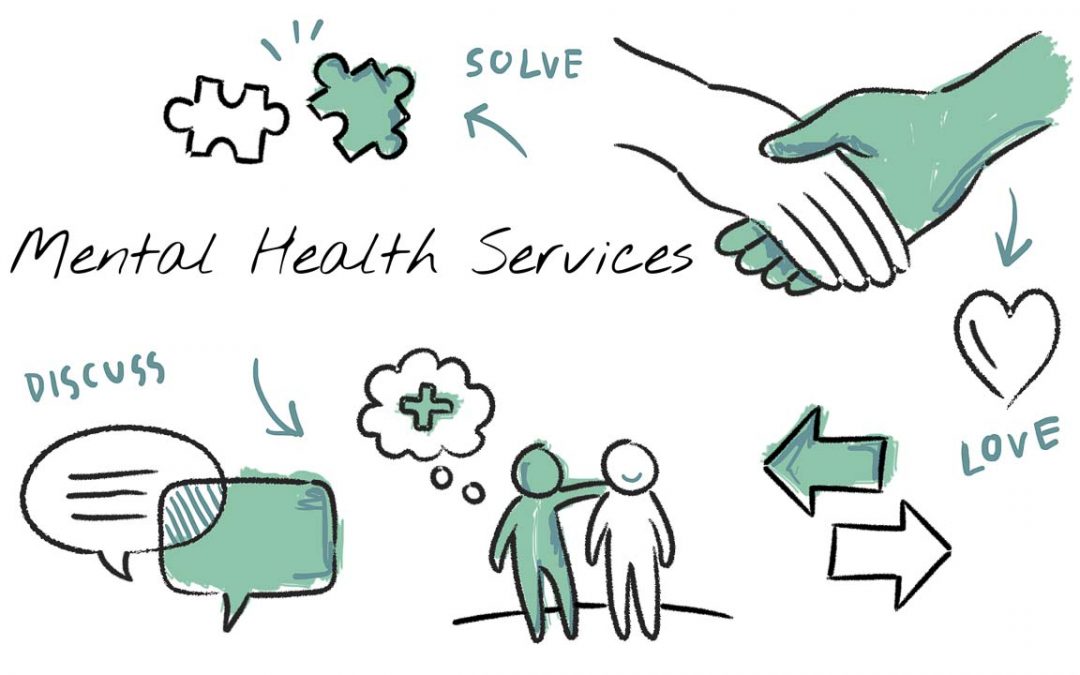Treatment for mental health disorders looks different for every individual. Those who suffer from psychiatric conditions like depression, bipolar disorder, and substance abuse all require unique therapies tailored specifically to their lifestyle — and the current severity of their condition.
Modern treatment options include inpatient and outpatient programs that offer patients different levels of support throughout their recovery. The rise in available treatments for different types of mental health disorders gives patients and healthcare providers more options than ever before to deal with these conditions.
However, this increasing variety can also cause some confusion among those seeking treatment. Understanding the difference between inpatient and outpatient care, including their respective benefits, can help mental healthcare patients and their caretakers make the right decision for their treatment and recovery plans.

What is Inpatient Treatment?
The term “inpatient treatment” refers to medical care that is provided in which a patient is formally admitted to the facility by their healthcare provider. Patients can require inpatient care for a variety of reasons, such as the following:
- Severe injury
- Heart attack or stroke
- Childbirth
- Routine/preventative surgery
- Mental disorders
- Substance abuse disorders
Inpatient treatment can occur in different types of facilities, including traditional hospitals, psychiatric hospitals, rehab centers, child birthing centers, or any other place of medical practice. Individuals are considered inpatient when they stay on the premises of their medical facility for the duration of their treatment.
This arrangement gives them access to trained medical professionals around the clock. Doctors usually choose to admit their patients to inpatient care in order to employ stringent patient observation standards, and ensure their safety during the critical early steps of treatment and/or recovery.
Did you know?
Staying overnight in a hospital does not necessarily mean a patient has received inpatient care.
Healthcare providers often use an observation period to determine whether the patient’s condition requires formal admittance to the facility. The observation period rarely exceeds 24 hours; however, concerned parties should clarify the patient’s status with the provider when considering Medicaid and insurance payments.

What is Outpatient Treatment?
In some instances, inpatient treatment begins as an outpatient visit. When the mental health professional feels that the patient’s condition necessitates further care than they can provide during outpatient treatment, they may place their patients under observation to determine whether they should be formally admitted as an inpatient. While the term “outpatient treatment” can refer to many visits to medical facilities, it is often used to describe mental healthcare and rehab programs for psychiatric patients.
Contrary to popular belief, those who require treatment for anxiety disorders, depression, bipolar disorder, substance abuse, and other psychiatric conditions can often receive sufficient care from an outpatient program. Many mental health and rehab facilities offer both inpatient and outpatient treatment options, and it is up to the patient and their mental healthcare provider to determine which program is right for them.
RELATED: 3 Ways Technology is Improving Patient Safety and Quality Care
How to Choose the Right Mental Health Program
Those seeking care for mental health disorders should always seek professional advice when considering whether to join an inpatient or outpatient treatment program. Each patient experiences the symptoms of their conditions in their own unique way, and should consider their personal circumstances when choosing how they receive care.
Consulting a mental health professional is the only way to ensure that the patient’s best interests are properly addressed in these difficult situations. Trusted and experienced behavioral healthcare providers have the knowledge and tools to determine how psychiatric patients should approach treatment, thus guiding them along their journey towards recovery.
Prioritizing Patient Safety
While there are key differences in inpatient vs outpatient mental health treatment methods, the common threads between both programs are prioritizing patient well-being and patient safety. The latter is especially critical in inpatient settings, where a patient is under 24-hour care and supervision.
Part of this treatment option involves frequent observation to monitor symptoms and progress, and ensure the patient does not harm themselves, others, or attempt to prematurely leave the facility. One way inpatient behavioral health facilities can prioritize patient safety checks are properly performed is by choosing technology like ObservSMART.
How We Can Help?
Through the use of Bluetooth proximity, ObservSMART ensures that required patient safety checks are done at the appropriate time intervals — and within the proper physical distance. This not only provides assurance that patients are seen and cared for, but also supports staff safety, communication, and workflow.
As a leader in observation compliance safety technology, we are proud to partner with facilities around the country to improve patient safety standards and support compliance goals. Contact us today to schedule a demo or to learn more about how we are empowering significant improvements in Q15 compliance, patient safety, and quality of care.

